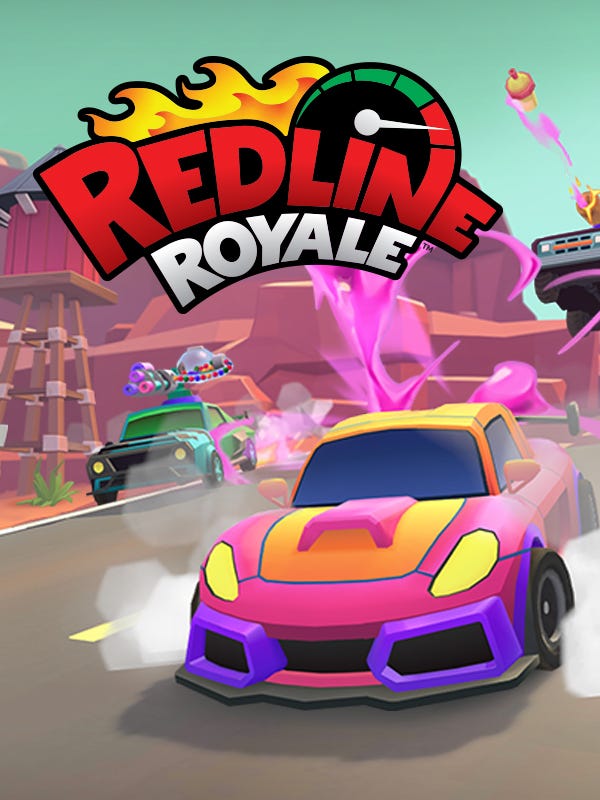Trending
Opinion: How will Project 2025 impact game developers?
The Heritage Foundation's manifesto for the possible next administration could do great harm to many, including large portions of the game development community.
Sinking $10 million into full-scale development only for players to cast the game aside in a month is a situation all developers want to avoid. But how?
March 7, 2024

In 2006, 71 new games were released on Steam. In 2023 that number was over 14,500.
Making a game has never been easier. Tasks that just a few years ago would have taken weeks to complete, like item design, can now be done in seconds, which increases opportunities for would-be developers with limited resources or technical skills. Some development tools now have ‘text-2-game’ functions, which leverage AI to produce images from written descriptions alone, further lowering the barrier to entry.
As a result, game development is more competitive than it has ever been. It shows no sign of slowing. Apple’s iOS App Store has more than 222,000 games (12% of all apps on the platform). Google Play has more than twice as many: about 452,000 (nearly 13% of apps).
Because there are more games than ever before, players are more likely to stop playing the moment they get bored. Sinking $10 million into full-scale development only for players to cast the game aside in a month is a situation all developers want to avoid. But how?
I am a big fan of a more iterative way to make games, one that could save developers millions of dollars per project. I call it Direct-To-Market Prototyping.
In traditional development, studios create a complete game with all its features. They follow the usual process: pre-production, prototyping, first playable, alpha, beta, and open beta. They conduct extensive testing much later in development, but this method requires hefty up-front investment, with little guarantee players will engage with the game. It’s a method that’s losing its utility, particularly for games designed for brief play sessions.
Direct-To-Market Prototyping, which I have long advocated for, requires that studios allocate only a fraction of their budget upfront. It forces developers to concentrate on a game’s core experience — its ‘entertainment factor’. What are the core gameplay loops and elements that engage the player?
At the ‘first playable’ stage of Direct-To-Market Prototyping, developers make a game with basic feature implementations, allowing testing on a thin layer of gameplay. It's a streamlined approach, emphasizing the core experience without becoming entangled in elaborate, non-essential features.
At this stage, developers should refrain from pouring too much into finer details such as code optimization. They should not make a complete game, nor should they make vertical slices of all the subsystems. Direct-To-Market Prototyping should be high-level and center on basic functionality, but done well enough to engage an audience.
Many developers, especially at small or mid-sized companies, assume they know what's needed for their game to be a success. Oftentimes, somebody has an idea and they convince themselves it's going to work simply because they want it to; people are less objective when they’re passionate. That is why Direct-To-Market Prototyping is so useful: it brings developers into reality with the market much sooner than traditional methods of development.
This approach allows for earlier user feedback so studios can make informed decisions about their game’s potential. Once you understand the game’s core experience, you build out the extra features on a stronger foundation. It also forces developers to distill their ideas and design concepts at the outset of the development process. Developers can test assumptions and assess whether the game aligns with market expectations.
In the worst-case scenario, developers may have to abandon a project after investing, say, a million dollars. But that’s more palatable than sinking ten times the amount into a futile project. These days, developers are less able to pump money into a game, release it, then sit back and watch the money roll in, as shown by the growth of live-service games. The market is more dynamic than ever. It requires a new approach — one that is flexible and helps developers mitigate risk. Direct-To-Market Prototyping is such an approach.
Direct-To-Market Prototyping is versatile and can be used irrespective of game genre or size. But before studios go ahead with it, here are some things they should keep in mind:
Don't fear starting anew. The core principle of this method is a willingness to start fresh. Studios should be quick to discard work that shows little promise. The goal is to determine if a game has a unique and engaging concept. If not, cut ties with the project early. Avoid the sunk-cost fallacy.
Core gameplay is key. Focus on the three key features or functions that make gameplay engaging. This is a useful framework that will prevent developers from overcomplicating things early on. The bells and whistles can come later; the initial concern is the game’s entertainment factor. Studios need a solid game-design team that understands the essence of the core game experience.
Avoid over-optimization. With Direct-To-Market Prototyping, there’s no need to refine every feature to perfection; the focus should be the core gameplay. Attention to things like code optimization is better diverted to more fundamental parts of the game.
Consider platform differences. Platforms like Steam embrace early access and make good conditions for an iterative approach; developers can update games that are already on the platform relatively stress-free. However, it is more challenging for consoles due to certification requirements and platform-specific guidelines; for example, consoles like the Switch require extra payment to update a game. The approach to Direct-To-Market Prototyping will vary depending on the platform(s) on which a developer will publish its game.
Innovation in established genres. Even for games in established genres, Direct-To-Market Prototyping can reveal a lot. Competition is fierce; developers must find ways to stand out. Prototyping helps reveal if a game has that competitive edge.
Use key metrics and data. To gauge the success of Direct-To-Market Prototyping, data is vital. User funnels should be set up to track where players drop off in the game, which will help identify pain points. Retention rates are analyzed to see how often players return to the game over time. For some games, revenue may also be considered to estimate profitability based on user acquisition costs.
Timeline and balance. Your timeline depends on your game's complexity. Strive to find a balance between getting valuable answers about your game and keeping costs in check. The goal is to reach a point where you can make informed decisions early, without overspending.
Prioritizing quick insights over building a perfectly polished game means developers could save time, money, and ultimately increase their chance of success.
Layoffs have hit thousands of workers in gaming in recent months. Unity Software cut 1,800 jobs in early January — 25% of its workforce. Twitch just let go of 35% of its staff in another round of cuts. Thunderful, Behaviour Interactive, CI Games, Bethesda Game Studios, 343 Industries, and Playtika are just some of the developers that have recently laid off staff. The margin for error in game development is shrinking.
New privacy regulation makes it harder for games on some platforms, such as mobile, to acquire users; it’s not as easy to track the activity of potential players, thus making it more difficult to know who to target with ads. Before early 2021, developers of games published on iOS had access to a wellspring of data on user behavior and preferences. Now iOS users are asked, directly, whether they want their data to be tracked across apps. Most are saying no: around 62% as of late 2021. This makes it harder for games to acquire users.
Add to that the unprecedented level of competition in game development today, and it’s a grim picture. I believe we need a more organic approach to game development.
This means looking at early user research to make more educated decisions. As budgets are tightened, studios must adopt cost-effective development strategies that circumvent the risk of spending millions to construct a full game, only to be faced with a lackluster market reception.
We at Room 8 Group had the opportunity to use Direct-To-Market Prototyping while working on RedLine Royale. It helped us identify crucial things like the pattern of player interaction, and in the very early stage of development, how different car designs in the game meshed with their environment. It allowed us to fine-tune design elements and core mechanics to create a more engaging experience.

Some very successful companies, like Supercell, have embraced this approach. Supercell’s strategy has involved releasing minimalistic games to gauge user preferences and engagement. By observing player behavior and identifying retention patterns, they’ve improved their games over time and have had repeated success.
But why hasn't Direct-To-Market Prototyping been adopted more widely despite its advantages? From my perspective, the allure of presenting a finished product often overshadows the more pragmatic, business-minded view of minimizing risk and ensuring profitability. While the traditional model may appear more glamorous, Direct-To-Market Prototyping promises a more efficient and financially responsible path.
Technical innovation will play a big role in its evolution. Leveraging AI and A/B testing will significantly enhance the process by empowering studios to gather data and make informed decisions more rapidly. But already, Direct-To-Market Prototyping is a dynamic method of development for a changing industry.

Read more about:
BlogsYou May Also Like